UPVC pipes offer excellent heat resistance, making them ideal for various applications. They can withstand high temperatures without losing structural integrity, ensuring longevity and reliability in plumbing, construction, and industrial projects. This durability makes them a preferred choice for hot water systems and other heat-exposed environments.
UPVC Pipe Heat Resistance: What You Need to Know
Introduction Of UPVC Pipe Heat Resistance:
In the realm of modern plumbing and construction, the significance of material selection cannot be overstated. Among the various options available, UPVC (Unplasticized Polyvinyl Chloride) pipes have emerged as a preferred choice, particularly for their commendable heat resistance. This article delves into the intricacies of UPVC pipe heat resistance, providing a comprehensive guide to ensure your pipes withstand high temperatures effectively.
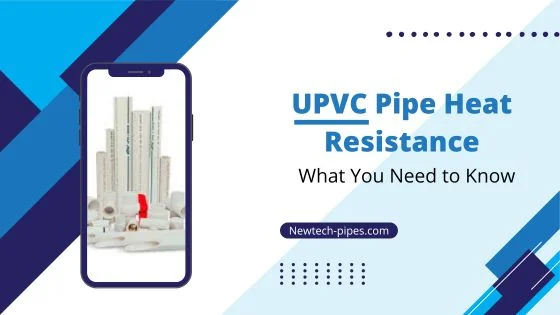
Overview of UPVC Pipes
What is UPVC?
UPVC, or Unplasticized Polyvinyl Chloride, is a type of plastic that is rigid and durable. Unlike regular PVC, UPVC does not contain plasticizers, which makes it a more robust and chemically resistant material. This rigidity makes UPVC a prime candidate for various plumbing and construction applications where long-lasting performance is essential.
Common Uses of UPVC Pipes
UPVC pipes are extensively used in residential plumbing systems, drainage systems, and even in the transportation of drinking water. They are also favoured in industrial settings for handling chemicals and in agricultural irrigation systems due to their resilience and longevity.
Advantages of Using UPVC Pipes
The benefits of using UPVC pipes are manifold. They offer excellent chemical resistance, are immune to corrosion, and have a long service life. Additionally, UPVC pipes are lightweight, making them easy to handle and install. Their heat resistance further enhances their suitability for applications involving high temperatures.
Understanding Heat Resistance in UPVC Pipes
Definition of Heat Resistance
Heat resistance refers to the ability of a material to withstand elevated temperatures without losing its structural integrity or performance characteristics. For plumbing materials, this means maintaining their shape, strength, and functionality despite exposure to high temperatures.
Importance of Heat Resistance in Plumbing
In plumbing systems, especially those that transport hot water or are exposed to fluctuating temperatures, the heat resistance of the material is crucial. It ensures the longevity and safety of the system, preventing failures and leaks that could lead to extensive damage and costly repairs.
How UPVC Pipes Resist Heat
UPVC pipes resist heat through their inherent material properties. The absence of plasticizers in UPVC enhances its thermal stability, allowing it to maintain its structure and performance even when subjected to high temperatures. The molecular composition of UPVC also contributes to its ability to resist deformation and degradation under heat.
Material Properties of UPVC
Chemical Composition of UPVC
UPVC is composed primarily of polyvinyl chloride with added stabilizers to enhance its thermal and mechanical properties. The lack of plasticizers ensures that the material remains rigid and durable, even under adverse conditions.
Thermal Properties of UPVC
UPVC exhibits excellent thermal properties, with a high melting point and low thermal conductivity. This means that it can withstand higher temperatures without melting or losing its strength. The low thermal conductivity also helps in maintaining temperature stability within the piping system.
Mechanical Strength at High Temperatures
The mechanical strength of UPVC remains largely unaffected by high temperatures. It retains its tensile strength and impact resistance, making it a reliable choice for applications where thermal stress is a concern.
Testing UPVC Pipe Heat Resistance
Standard Testing Methods
UPVC pipes are subjected to rigorous testing to assess their heat resistance. Standard methods include exposure to high temperatures over extended periods and measuring any changes in physical properties. These tests ensure that the pipes meet industry standards for performance and safety.
Laboratory vs. Real-World Testing
While laboratory tests provide controlled conditions to evaluate heat resistance, real-world testing involves practical applications where the pipes are used in actual operating environments. Both types of testing are crucial to verify the pipes’ performance under various conditions.
Interpreting Test Results
The results from heat resistance tests are analyzed to determine the maximum temperature limits and the expected lifespan of the pipes under those conditions. This information is essential for engineers and installers to make informed decisions about material selection and application.
Factors Affecting UPVC Pipe Heat Resistance
Environmental Conditions
The surrounding environment, including ambient temperature and exposure to sunlight, can influence the heat resistance of UPVC pipes. Pipes installed in shaded or insulated areas may perform better than those exposed to direct sunlight.
Duration of Heat Exposure
The length of time the pipes are exposed to high temperatures also plays a significant role. Short-term exposure may have minimal effects, while prolonged exposure could lead to gradual degradation.
Load and Pressure Conditions
The mechanical load and internal pressure within the piping system can impact the heat resistance. Higher loads and pressures can exacerbate the effects of high temperatures, necessitating careful design and material selection.
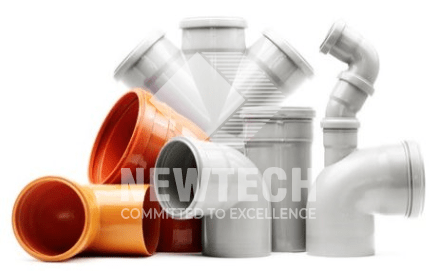
Comparing UPVC with Other Pipe Materials
UPVC vs. PVC: Heat Resistance
While both UPVC and PVC are popular choices, UPVC offers superior heat resistance due to its rigid structure. PVC, with its plasticizers, may not perform as well under high temperatures, making UPVC a better option for heat-intensive applications.
UPVC vs. CPVC: Performance at High Temperatures
CPVC (Chlorinated Polyvinyl Chloride) pipes are known for their enhanced heat resistance compared to regular UPVC. However, UPVC still provides sufficient heat resistance for many applications, along with the added benefits of chemical resistance and cost-effectiveness.
UPVC vs. Metal Pipes: Pros and Cons
Metal pipes, such as copper and steel, offer excellent heat resistance but are prone to corrosion and are heavier and more expensive. UPVC pipes, while slightly less heat-resistant than metals, provide a corrosion-free, lightweight, and cost-effective alternative.
Applications of Heat Resistant UPVC Pipes
Residential Plumbing
In homes, UPVC pipes are used for hot and cold water distribution, ensuring reliable performance even with fluctuating temperatures. Their ease of installation and maintenance makes them a popular choice for residential plumbing systems.
Industrial Applications
Industries utilize UPVC pipes for transporting chemicals, hot water, and other fluids. Their heat resistance and chemical stability make them ideal for such demanding environments.
HVAC Systems
UPVC pipes are also used in HVAC systems for efficient and durable fluid transport. Their ability to withstand high temperatures without compromising structural integrity is crucial in these applications.
Installation Best Practices for UPVC Pipes
Preparing for Installation
Proper preparation is key to successful UPVC pipe installation. This includes measuring and cutting the pipes accurately, ensuring clean and smooth surfaces for joining, and planning the layout to minimize stress points.
Tools and Materials Needed
Essential tools for UPVC pipe installation include pipe cutters, deburring tools, and solvent cement for joining. Ensuring you have all necessary materials on hand before starting the installation can prevent delays and ensure a smooth process.
Step-by-Step Installation Guide
- Measure and cut the pipes to the required lengths.
- Clean and deburr the pipe ends.
- Apply solvent cement to both the pipe and fitting surfaces.
- Join the pipe and fitting, ensuring proper alignment.
- Hold in place for a few seconds to allow the bond to set.
Ensuring Optimal Heat Resistance During Installation
Proper Fitting and Jointing Techniques
Using the correct fitting and jointing techniques is essential to maintain the heat resistance of UPVC pipes. Ensure that joints are clean, dry, and properly aligned to create a strong and durable bond.
Avoiding Common Installation Mistakes
Common mistakes, such as using the wrong type of cement or failing to allow sufficient curing time, can compromise the heat resistance of UPVC pipes. Follow manufacturer guidelines closely to avoid such errors.
Inspection and Quality Control
Conduct thorough inspections and quality control checks throughout the installation process. This includes verifying joint integrity, checking for leaks, and ensuring that all connections are secure and properly aligned.
Maintenance Tips for UPVC Pipes
Regular Inspection and Cleaning
Regular inspections can help identify potential issues before they become major problems. Cleaning the pipes and fittings periodically can prevent buildup and ensure optimal performance.
Handling Repairs and Replacements
If any section of the UPVC piping system shows signs of damage or wear, address it promptly. Repair small leaks or cracks with appropriate sealants, and replace severely damaged sections to maintain the system’s integrity.
Ensuring Long-Term Performance
Adhering to recommended maintenance practices can significantly extend the lifespan of UPVC pipes. Regularly check for signs of heat damage and take corrective action as needed to ensure long-term performance.
Common Issues and Troubleshooting
Identifying Signs of Heat Damage
Heat damage in UPVC pipes can manifest as discolouration, warping, or cracking. Regular inspections can help identify these signs early, allowing for timely repairs or replacements.
Quick Fixes for Heat-Related Problems
For minor heat-related issues, such as small cracks or leaks, quick fixes like applying heat-resistant sealants can be effective. Ensure that the repair materials are compatible with UPVC to avoid further damage.
When to Call a Professional
In cases of extensive heat damage or recurring issues, it is advisable to call a professional plumber. They can provide expert assessments and implement more complex repairs or replacements as needed.
Innovations in UPVC Pipe Technology
Recent Advances in Material Science
Advancements in material science have led to the development of UPVC formulations with enhanced heat resistance and durability. These innovations improve the performance and lifespan of UPVC pipes in high-temperature applications.
Emerging Trends in UPVC Pipe Manufacturing
Emerging trends in UPVC pipe manufacturing include the use of eco-friendly materials and processes, as well as the integration of smart technologies for monitoring and maintenance.
Future Prospects for UPVC Pipes
The future of UPVC pipes looks promising, with ongoing research and development focused on further enhancing their properties and expanding their applications. As technology evolves, UPVC pipes are expected to become even more versatile and reliable.
Environmental Impact of UPVC Pipes
Sustainability and Recycling
UPVC pipes are highly sustainable, with a long service life and recyclability. Recycling UPVC helps reduce waste and conserves resources, contributing to a more sustainable construction industry.
Environmental Benefits of Using UPVC
The use of UPVC pipes offers several environmental benefits, including lower energy consumption during production and reduced greenhouse gas emissions. Their durability and resistance to corrosion also minimize the need for frequent replacements.
Regulatory Considerations
Compliance with environmental regulations is essential for the production and use of UPVC pipes. Manufacturers must adhere to guidelines for material composition, production processes, and end-of-life disposal to ensure environmental safety.
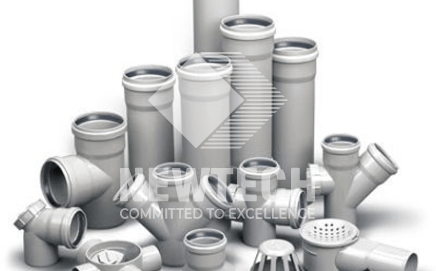
Cost-Benefit Analysis of UPVC Pipes
Initial Investment vs. Long-Term Savings
While the initial investment in UPVC pipes may be higher than some alternatives, their long-term savings make them a cost-effective choice. Their durability, low maintenance requirements, and resistance to heat and chemicals result in lower overall costs.
Comparing Costs with Alternative Materials
When comparing the costs of UPVC pipes with alternative materials, consider factors such as installation, maintenance, and lifespan. UPVC often provides better value for money, especially in high-temperature applications.
Value for Money in High-Temperature Applications
In applications where high temperatures are a concern, the value of UPVC pipes becomes even more apparent. Their heat resistance and reliability ensure that they perform well, reducing the risk of costly failures and repairs.
Case Studies
Real-World Examples of UPVC Pipe Performance
Case studies of UPVC pipe performance in various settings provide valuable insights into their effectiveness. These examples demonstrate how UPVC pipes handle high temperatures and demanding conditions, highlighting their reliability and versatility.
Success Stories in Residential and Industrial Settings
Success stories from residential and industrial applications showcase the benefits of using UPVC pipes. These stories often involve significant cost savings, improved system performance, and enhanced durability.
Lessons Learned from Practical Applications
Lessons learned from practical applications of UPVC pipes can inform best practices and help avoid common pitfalls. By understanding these lessons, users can optimize their use of UPVC pipes for maximum benefit.
Expert Opinions on UPVC Pipe Heat Resistance
Insights from Industry Professionals
Industry professionals, including engineers and plumbers, provide valuable insights into the heat resistance of UPVC pipes. Their expertise and experience offer practical guidance for selecting and using UPVC pipes effectively.
Interviews with Engineers and Plumbers
Interviews with engineers and plumbers reveal their firsthand experiences with UPVC pipes in various applications. These interviews highlight the strengths and potential challenges of using UPVC pipes in high-temperature environments.
Recommendations for Best Practices
Based on expert opinions and practical experiences, recommendations for best practices in using UPVC pipes can help ensure optimal performance. These recommendations cover installation, maintenance, and troubleshooting tips.
Frequently Asked Questions
Common Queries About UPVC Pipes
Addressing common queries about UPVC pipes can help clarify their benefits and limitations. FAQs cover topics such as heat resistance, installation, maintenance, and cost considerations.
Addressing Misconceptions
Addressing misconceptions about UPVC pipes is essential for informed decision-making. Clarifying common myths and providing accurate information helps users understand the true capabilities of UPVC pipes.
Providing Clear and Concise Answers
Providing clear and concise answers to frequently asked questions ensures that users have the information they need to make informed choices. These answers should be easy to understand.
Conclusion
Summarizing Key Points
Summarizing the key points covered in the article reinforces the benefits and importance of UPVC pipe heat resistance. This recap highlights the material properties, applications, and best practices for using UPVC pipes effectively.
Importance of Proper Installation and Maintenance
Emphasizing the importance of proper installation and maintenance ensures that users understand the steps needed to maximize the performance and longevity of UPVC pipes.
Encouraging Informed Decisions
Encouraging readers to make informed decisions based on the information provided helps them select the best materials and practices for their specific needs.
Call to Action
Inviting Readers to Learn More
Inviting readers to learn more about UPVC pipes and their heat resistance encourages continued education and engagement. Providing links to additional resources and expert contacts can facilitate this learning process.
Providing Contact Information for Further Assistance
Providing contact information for further assistance ensures that readers can reach out with any questions or concerns. This contact information can include email addresses, phone numbers, and links to professional services.
Encouraging Feedback and Engagement
Encouraging feedback and engagement from readers fosters a sense of community and collaboration. Inviting readers to share their experiences and insights can enhance the collective knowledge and understanding of UPVC pipes.
Additional Resources
Links to Further Reading
Providing links to further reading materials, such as articles, whitepapers, and research studies, helps readers deepen their understanding of UPVC pipes and their heat resistance.
Recommended Products and Suppliers
Recommending trusted products and suppliers for UPVC pipes ensures that readers have access to high-quality materials and services. These recommendations can include links to supplier websites and product reviews.
Educational Videos and Tutorials
Offering educational videos and tutorials on UPVC pipe installation, maintenance, and troubleshooting provides practical guidance and visual aids to support readers in their projects.
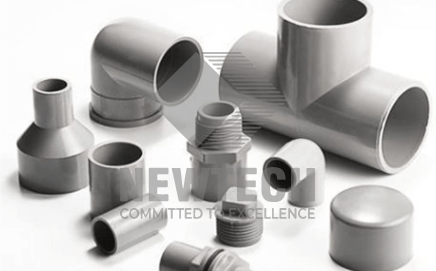
What You Need to Know about UPVC Pipe
In the realm of modern plumbing and construction, the significance of material selection cannot be overstated. Among the various options available, UPVC (Unplasticized Polyvinyl Chloride) pipes have emerged as a preferred choice, particularly for their commendable heat resistance. This article delves into the intricacies of UPVC pipe heat resistance, providing a comprehensive guide to ensure your pipes withstand high temperatures effectively.
Overview of UPVC Pipes
What is UPVC?
UPVC, or Unplasticized Polyvinyl Chloride, is a type of plastic that is rigid and durable. Unlike regular PVC, UPVC does not contain plasticizers, which makes it a more robust and chemically resistant material. This rigidity makes UPVC a prime candidate for various plumbing and construction applications where long-lasting performance is essential.
Common Uses of UPVC Pipes
UPVC pipes are extensively used in residential plumbing systems, drainage systems, and even in the transportation of drinking water. They are also favoured in industrial settings for handling chemicals and in agricultural irrigation systems due to their resilience and longevity.
Advantages of Using UPVC Pipes
The benefits of using UPVC pipes are manifold. They offer excellent chemical resistance, are immune to corrosion, and have a long service life. Additionally, UPVC pipes are lightweight, making them easy to handle and install. Their heat resistance further enhances their suitability for applications involving high temperatures.
Understanding Heat Resistance in UPVC Pipes
Definition of Heat Resistance
Heat resistance refers to the ability of a material to withstand elevated temperatures without losing its structural integrity or performance characteristics. For plumbing materials, this means maintaining their shape, strength, and functionality despite exposure to high temperatures.
Importance of Heat Resistance in Plumbing
In plumbing systems, especially those that transport hot water or are exposed to fluctuating temperatures, the heat resistance of the material is crucial. It ensures the longevity and safety of the system, preventing failures and leaks that could lead to extensive damage and costly repairs.
How UPVC Pipes Resist Heat
UPVC pipes resist heat through their inherent material properties. The absence of plasticizers in UPVC enhances its thermal stability, allowing it to maintain its structure and performance even when subjected to high temperatures. The molecular composition of UPVC also contributes to its ability to resist deformation and degradation under heat.
Material Properties of UPVC
Chemical Composition of UPVC
UPVC is composed primarily of polyvinyl chloride with added stabilizers to enhance its thermal and mechanical properties. The lack of plasticizers ensures that the material remains rigid and durable, even under adverse conditions.
Thermal Properties of UPVC
UPVC exhibits excellent thermal properties, with a high melting point and low thermal conductivity. This means that it can withstand higher temperatures without melting or losing its strength. The low thermal conductivity also helps in maintaining temperature stability within the piping system.
Mechanical Strength at High Temperatures
The mechanical strength of UPVC remains largely unaffected by high temperatures. It retains its tensile strength and impact resistance, making it a reliable choice for applications where thermal stress is a concern.
Testing UPVC Pipe Heat Resistance
Standard Testing Methods
UPVC pipes are subjected to rigorous testing to assess their heat resistance. Standard methods include exposure to high temperatures over extended periods and measuring any changes in physical properties. These tests ensure that the pipes meet industry standards for performance and safety.
Laboratory vs. Real-World Testing
While laboratory tests provide controlled conditions to evaluate heat resistance, real-world testing involves practical applications where the pipes are used in actual operating environments. Both types of testing are crucial to verify the pipes’ performance under various conditions.
Interpreting Test Results
The results from heat resistance tests are analyzed to determine the maximum temperature limits and the expected lifespan of the pipes under those conditions. This information is essential for engineers and installers to make informed decisions about material selection and application.
Factors Affecting UPVC Pipe Heat Resistance
Environmental Conditions
The surrounding environment, including ambient temperature and exposure to sunlight, can influence the heat resistance of UPVC pipes. Pipes installed in shaded or insulated areas may perform better than those exposed to direct sunlight.
Duration of Heat Exposure
The length of time the pipes are exposed to high temperatures also plays a significant role. Short-term exposure may have minimal effects, while prolonged exposure could lead to gradual degradation.
Load and Pressure Conditions
The mechanical load and internal pressure within the piping system can impact the heat resistance. Higher loads and pressures can exacerbate the effects of high temperatures, necessitating careful design and material selection.
Comparing UPVC with Other Pipe Materials
UPVC vs. PVC: Heat Resistance
While both UPVC and PVC are popular choices, UPVC offers superior heat resistance due to its rigid structure. PVC, with its plasticizers, may not perform as well under high temperatures, making UPVC a better option for heat-intensive applications.
UPVC vs. CPVC: Performance at High Temperatures
CPVC (Chlorinated Polyvinyl Chloride) pipes are known for their enhanced heat resistance compared to regular UPVC. However, UPVC still provides sufficient heat resistance for many applications, along with the added benefits of chemical resistance and cost-effectiveness.
UPVC vs. Metal Pipes: Pros and Cons
Metal pipes, such as copper and steel, offer excellent heat resistance but are prone to corrosion and are heavier and more expensive. UPVC pipes, while slightly less heat-resistant than metals, provide a corrosion-free, lightweight, and cost-effective alternative.
Applications of Heat Resistant UPVC Pipes
Residential Plumbing
In homes, UPVC pipes are used for hot and cold water distribution, ensuring reliable performance even with fluctuating temperatures. Their ease of installation and maintenance makes them a popular choice for residential plumbing systems.
Industrial Applications
Industries utilize UPVC pipes for transporting chemicals, hot water, and other fluids. Their heat resistance and chemical stability make them ideal for such demanding environments.
HVAC Systems
UPVC pipes are also used in HVAC systems for efficient and durable fluid transport. Their ability to withstand high temperatures without compromising structural integrity is crucial in these applications.
Installation Best Practices for UPVC Pipes
Preparing for Installation
Proper preparation is key to successful UPVC pipe installation. This includes measuring and cutting the pipes accurately, ensuring clean and smooth surfaces for joining, and planning the layout to minimize stress points.
Tools and Materials Needed
Essential tools for UPVC pipe installation include pipe cutters, deburring tools, and solvent cement for joining. Ensuring you have all necessary materials on hand before starting the installation can prevent delays and ensure a smooth process.
Step-by-Step Installation Guide
- Measure and cut the pipes to the required lengths.
- Clean and deburr the pipe ends.
- Apply solvent cement to both the pipe and fitting surfaces.
- Join the pipe and fitting, ensuring proper alignment.
- Hold in place for a few seconds to allow the bond to set.
Ensuring Optimal Heat Resistance During Installation
Proper Fitting and Jointing Techniques
Using the correct fitting and jointing techniques is essential to maintain the heat resistance of UPVC pipes. Ensure that joints are clean, dry, and properly aligned to create a strong and durable bond.
Avoiding Common Installation Mistakes
Common mistakes, such as using the wrong type of cement or failing to allow sufficient curing time, can compromise the heat resistance of UPVC pipes. Follow manufacturer guidelines closely to avoid such errors.
Inspection and Quality Control
Conduct thorough inspections and quality control checks throughout the installation process. This includes verifying joint integrity, checking for leaks, and ensuring that all connections are secure and properly aligned.
Maintenance Tips for UPVC Pipes
Regular Inspection and Cleaning
Regular inspections can help identify potential issues before they become major problems. Cleaning the pipes and fittings periodically can prevent buildup and ensure optimal performance.
Handling Repairs and Replacements
If any section of the UPVC piping system shows signs of damage or wear, address it promptly. Repair small leaks or cracks with appropriate sealants, and replace severely damaged sections to maintain the system’s integrity.
Ensuring Long-Term Performance
Adhering to recommended maintenance practices can significantly extend the lifespan of UPVC pipes. Regularly check for signs of heat damage and take corrective action as needed to ensure long-term performance.
Common Issues and Troubleshooting
Identifying Signs of Heat Damage
Heat damage in UPVC pipes can manifest as discolouration, warping, or cracking. Regular inspections can help identify these signs early, allowing for timely repairs or replacements.
Quick Fixes for Heat-Related Problems
For minor heat-related issues, such as small cracks or leaks, quick fixes like applying heat-resistant sealants can be effective. Ensure that the repair materials are compatible with UPVC to avoid further damage.
When to Call a Professional
In cases of extensive heat damage or recurring issues, it is advisable to call a professional plumber. They can provide expert assessments and implement more complex repairs or replacements as needed.
Innovations in UPVC Pipe Technology
Recent Advances in Material Science
Advancements in material science have led to the development of UPVC formulations with enhanced heat resistance and durability. These innovations improve the performance and lifespan of UPVC pipes in high-temperature applications.
Emerging Trends in UPVC Pipe Manufacturing
Emerging trends in UPVC pipe manufacturing include the use of eco-friendly materials and processes, as well as the integration of smart technologies for monitoring and maintenance.
Future Prospects for UPVC Pipes
The future of UPVC pipes looks promising, with ongoing research and development focused on further enhancing their properties and expanding their applications. As technology evolves, UPVC pipes are expected to become even more versatile and reliable.
Environmental Impact of UPVC Pipes
Sustainability and Recycling
UPVC pipes are highly sustainable, with a long service life and recyclability. Recycling UPVC helps reduce waste and conserves resources, contributing to a more sustainable construction industry.
Environmental Benefits of Using UPVC
The use of UPVC pipes offers several environmental benefits, including lower energy consumption during production and reduced greenhouse gas emissions. Their durability and resistance to corrosion also minimize the need for frequent replacements.
Regulatory Considerations
Compliance with environmental regulations is essential for the production and use of UPVC pipes. Manufacturers must adhere to guidelines for material composition, production processes, and end-of-life disposal to ensure environmental safety.
Cost-Benefit Analysis of UPVC Pipes
Initial Investment vs. Long-Term Savings
While the initial investment in UPVC pipes may be higher than some alternatives, their long-term savings make them a cost-effective choice. Their durability, low maintenance requirements, and resistance to heat and chemicals result in lower overall costs.
Comparing Costs with Alternative Materials
When comparing the costs of UPVC pipes with alternative materials, consider factors such as installation, maintenance, and lifespan. UPVC often provides better value for money, especially in high-temperature applications.
Value for Money in High-Temperature Applications
In applications where high temperatures are a concern, the value of UPVC pipes becomes even more apparent. Their heat resistance and reliability ensure that they perform well, reducing the risk of costly failures and repairs.
Case Studies
Real-World Examples of UPVC Pipe Performance
Case studies of UPVC pipe performance in various settings provide valuable insights into their effectiveness. These examples demonstrate how UPVC pipes handle high temperatures and demanding conditions, highlighting their reliability and versatility.
Success Stories in Residential and Industrial Settings
Success stories from residential and industrial applications showcase the benefits of using UPVC pipes. These stories often involve significant cost savings, improved system performance, and enhanced durability.
Lessons Learned from Practical Applications
Lessons learned from practical applications of UPVC pipes can inform best practices and help avoid common pitfalls. By understanding these lessons, users can optimize their use of UPVC pipes for maximum benefit.
Expert Opinions on UPVC Pipe Heat Resistance
Insights from Industry Professionals
Industry professionals, including engineers and plumbers, provide valuable insights into the heat resistance of UPVC pipes. Their expertise and experience offer practical guidance for selecting and using UPVC pipes effectively.
Interviews with Engineers and Plumbers
Interviews with engineers and plumbers reveal their firsthand experiences with UPVC pipes in various applications. These interviews highlight the strengths and potential challenges of using UPVC pipes in high-temperature environments.
Recommendations for Best Practices
Based on expert opinions and practical experiences, recommendations for best practices in using UPVC pipes can help ensure optimal performance. These recommendations cover installation, maintenance, and troubleshooting tips.
Frequently Asked Questions
Common Queries About UPVC Pipes
Addressing common queries about UPVC pipes can help clarify their benefits and limitations. FAQs cover topics such as heat resistance, installation, maintenance, and cost considerations.
Addressing Misconceptions
Addressing misconceptions about UPVC pipes is essential for informed decision-making. Clarifying common myths and providing accurate information helps users understand the true capabilities of UPVC pipes.
Providing Clear and Concise Answers
Providing clear and concise answers to frequently asked questions ensures that users have the information they need to make informed choices. These answers should be straightforward and easy to understand.
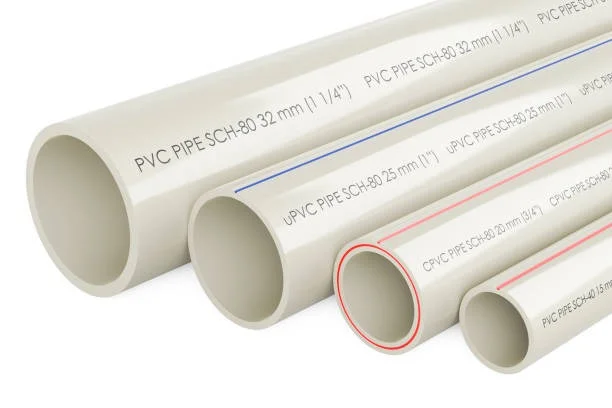
Conclusion
Summarizing Key Points
Summarizing the key points covered in the article reinforces the benefits and importance of UPVC pipe heat resistance. This recap highlights the material properties, applications, and best practices for using UPVC pipes effectively.
Importance of Proper Installation and Maintenance
Emphasizing the importance of proper installation and maintenance ensures that users understand the steps needed to maximize the performance and longevity of UPVC pipes.
Encouraging Informed Decisions
Encouraging readers to make informed decisions based on the information provided helps them select the best materials and practices for their specific needs.
Call to Action
Inviting Readers to Learn More
Inviting readers to learn more about UPVC pipes and their heat resistance encourages continued education and engagement. Providing links to additional resources and expert contacts can facilitate this learning process.
Providing Contact Information for Further Assistance
Providing contact information for further assistance ensures that readers can reach out with any questions or concerns. This contact information can include email addresses, phone numbers, and links to professional services.
Encouraging Feedback and Engagement
Encouraging feedback and engagement from readers fosters a sense of community and collaboration. Inviting readers to share their experiences and insights can enhance the collective knowledge and understanding of UPVC pipes.
Additional Resources
Links to Further Reading
Providing links to further reading materials, such as articles, whitepapers, and research studies, helps readers deepen their understanding of UPVC pipes and their heat resistance.
Recommended Products and Suppliers
Recommending trusted products and suppliers for UPVC pipes ensures that readers have access to high-quality materials and services. These recommendations can include links to supplier websites and product reviews.
Educational Videos and Tutorials
Offering educational videos and tutorials on UPVC pipe installation, maintenance, and troubleshooting provides practical guidance and visual aids to support readers in their projects.

